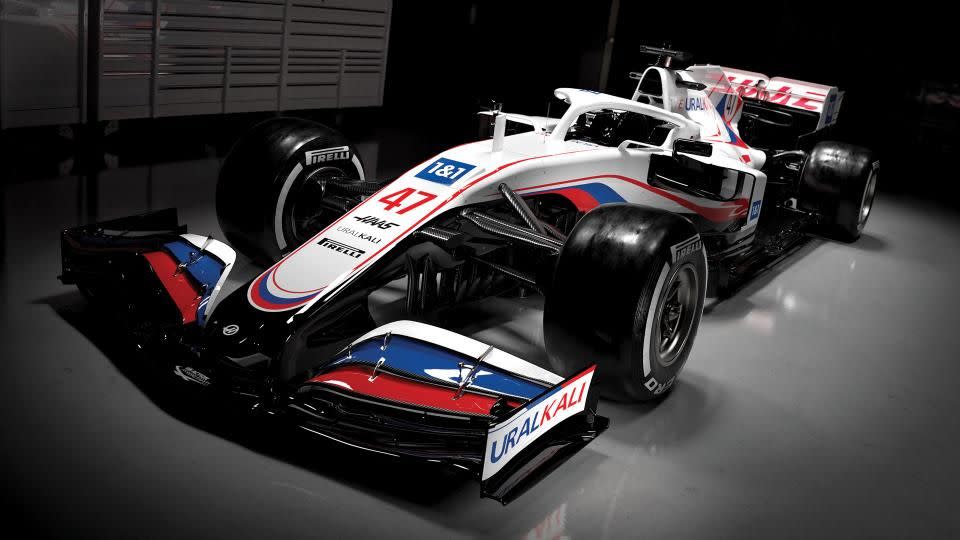Haas F1's Russian-Flag Livery Is Somehow OK Despite Ban on Russian Flag

The Russian flag is a tri-color design of three equal-size horizontal stripes: White on top, blue in the middle, red on the bottom. First flown on Russian ships in 1696, it's been replaced twice—most recently by the hammer-and-sickle design flown over the USSR—but officially re-instated as of 1991 with the formation of the post-Soviet Russian Federation.
It's also banned from appearing in any kind of "world championship" competition. A December 2020 ruling by the Court of Arbitration for Sport states that the Russian flag, national anthem, and even the name "Russia" cannot appear in the next two Olympics or at any championship competition for the next two years. It's a consequence of the World Anti-Doping Agency's case against Russia, which found that the country engaged in state-ordered tampering in an anti-doping testing laboratory in Moscow, with cover-ups dating back to the 2014 Winter Olympics.
All of this makes Haas F1's new 2021 livery, revealed today, a particular head-scratcher: Look at this car and tell me you don't see the Russian flag.

Officially, the Haas 2021 livery is that of the team's title sponsor, Uralkali, the world's largest producer and exporter of potash, a potassium-containing material used in industrial fertilizer. Coincidentally, Uralkali is based in Russia, and the company's logo is made up of the colors of the Russian flag. Even more coincidentally, billionaire Dmitry Mazepin—father of Haas F1 driver Nikita Mazepin—is a major stakeholder in Uralkali.

Haas principal Guenther Steiner claims that the 2021 livery design was agreed upon before it became clear that the WADA ruling would extend to Formula 1, insisting that this timing shows that the Uralkali sponsorship is not meant as a way to circumvent the Russian flag ban. "We came up with this livery already last year before all of this came out from WADA about the Russian flag," Steiner told media. "Obviously we cannot use the Russian flag as the Russian flag, but you can use colors on a car. In the end, it's the athlete which cannot display the Russian flag and not the team. The team is an American team."
Steiner told media that the team had cleared its new livery with the FIA, but that FIA approval was not required for the design.
The younger Mazepin—who has already mired himself in controversy after posting video of himself sexually harassing a woman on social media—will not be allowed to wear any sort of Russian national flag, emblem or symbol as a competitor in Formula 1, nor can he identify himself as a Russian driver. As part of the WADA ruling, Mazepin will be classified as a "neutral athlete from Russia."
You Might Also Like

